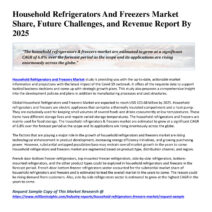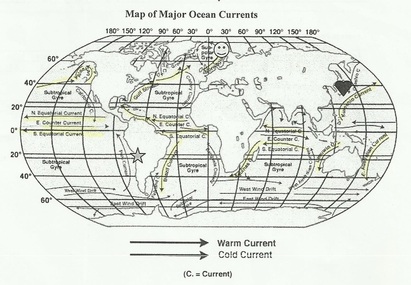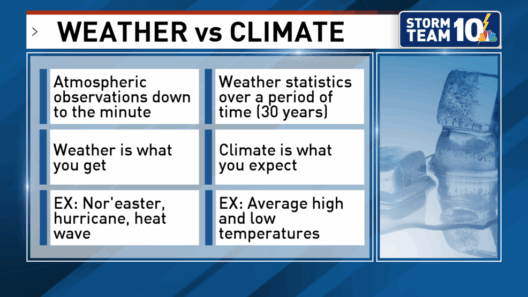Ocean currents, the vast rivers of water that flow through our oceans, serve as a fundamental component of Earth’s climate system. These currents redistribute heat, influence weather patterns, and even impact marine ecosystems. Understanding how these currents operate and their global implications is crucial for comprehending the intricacies of our planet’s climate.
The mechanism behind ocean currents is driven by several forces, including wind, water density, and the Earth’s rotation. As warm water expands and rises, and cold water contracts and sinks, this difference in density creates a dynamic interplay of movement. Consequently, various types of currents can be identified, each with distinct aspects that contribute to global climatic conditions.
How Ocean Currents Regulate Temperature
One of the primary functions of ocean currents is the regulation of temperature across the globe. The ocean acts as a gigantic heat reservoir, absorbing solar energy and distributing this warmth through currents. The Gulf Stream, for instance, carries warm water from the Gulf of Mexico up the eastern coast of the United States and across the Atlantic Ocean to Western Europe. This warm current helps to temper the climate of Northern Europe, resulting in milder winters compared to other regions at similar latitudes.
Conversely, cold currents, such as the California Current, pull cool water from high latitudes toward the equator. This cooling effect can have significant implications for the climate of coastal areas, influencing ecosystems and agriculture alike. Regions that experience these cold currents often have more arid conditions and lower overall temperatures, reinforcing the importance of currents in maintaining ecological balance.
The Role of Ocean Currents in Weather Patterns
Ocean currents also play an integral role in influencing weather patterns, which are critical to agriculture, disaster preparedness, and daily life. More than just shifting temperatures, currents affect precipitation patterns, storm development, and wind systems.
El Niño and La Niña represent two quintessential phenomena tied closely to ocean currents. These climate oscillations are characterized by the periodic warming (El Niño) and cooling (La Niña) of sea surface temperatures in the central and eastern Pacific Ocean. El Niño can lead to increased rainfall and flooding in various parts of the world, while La Niña typically brings drier conditions and droughts. Understanding these patterns aids in predicting variations in rainfall, temperature shifts, and crop yields globally, illustrating the intricate ties between ocean currents and climate variability.
Moreover, ocean currents can influence the strength and path of hurricanes and monsoons. Warm currents can fuel these storms, intensifying their impacts on affected regions. Conversely, cooler currents can help dissipate storm energy. Thus, the interplay between ocean currents and atmospheric conditions is critical for understanding not only long-term climate patterns but also short-term weather-related events.
Ocean Currents and Climate Change: A Complicated Relationship
The implications of climate change on ocean currents raise significant concerns about the future of our planet. As global temperatures rise, the melting of polar ice and the resulting influx of freshwater can disrupt the delicate balance of ocean currents. Changes in salinity — the saltiness or concentration of salt in water — can impact the density-driven currents that are vital to global circulation.
One alarming concern is the potential for the Atlantic Meridional Overturning Circulation (AMOC) to weaken or collapse. This current system plays a crucial role in transporting warm water northward. A slowdown could lead to drastic climatic changes in Europe and North America, including frigid winters and altered rain patterns. Environmental scientists continue to study these interactions in order to gain a clearer understanding of the future ramifications of climate change on ocean currents.
Impacts on Marine Ecosystems
The effects of ocean currents extend beyond terrestrial climatic conditions and significantly influence marine ecosystems. Nutrient distribution is heavily reliant on currents, which transport essential elements to oceanic food webs. Areas where currents converge, known as upwelling zones, are often teeming with marine life due to the rich nutrients brought from the ocean depths to the surface.
The alteration of ocean currents can lead to changes in species distribution, abundance, and even the functioning of entire marine ecosystems. For instance, shifts in current patterns can affect the migration routes of fish and breeding behaviors, impacting fisheries and local economies dependent on these resources.
The Future: Monitoring and Adaptation Strategies
In light of changing climate patterns and the integral role of ocean currents, it is essential to prioritize monitoring efforts and develop adaptive strategies. Utilizing advanced technologies like satellite imaging and underwater drones, scientists are better equipped to track and analyze ocean current dynamics. This information is crucial for anticipating ecological and climatic shifts, enabling communities to prepare for potential impacts.
Furthermore, an informed public can contribute to climate action. Awareness of the significant role ocean currents play in global climate equips individuals, policymakers, and organizations to advocate for sustainable practices that mitigate further climatic impacts.
In conclusion, ocean currents serve as vital arteries of our planet’s climate system, affecting everything from temperature regulation to weather patterns and ecosystem health. Understanding their intricacies will not only aid in developing predictive models but will also empower society to engage in proactive measures against the looming threat of climate change. The ocean’s vast, flowing currents may underscore the delicate balance of our climate, reminding us of the interconnectedness of natural systems.






